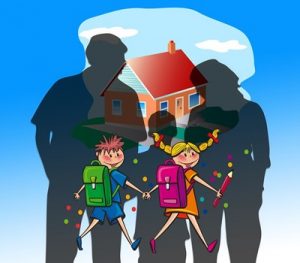It’s a Great Time to Be a Homeschooler
Kerry McDonald – Tuesday, November 29, 2016 – at FEE
 Homeschoolers are a diverse bunch. Our teaching approaches and learning philosophies vary. Our politics run the gamut and our visions of education reform differ greatly. Yet, despite these contrasts, homeschoolers are remarkably similar. I recently asked a large, eclectic group of homeschooling parents why they chose this education option for their children. Key homeschooling features like “freedom,” and “time,” and “flexibility,” and “individualization” were common drivers for all.
Homeschoolers are a diverse bunch. Our teaching approaches and learning philosophies vary. Our politics run the gamut and our visions of education reform differ greatly. Yet, despite these contrasts, homeschoolers are remarkably similar. I recently asked a large, eclectic group of homeschooling parents why they chose this education option for their children. Key homeschooling features like “freedom,” and “time,” and “flexibility,” and “individualization” were common drivers for all.
Of course my first question was: “What about socialization?”
When I first heard about homeschooling, it was 1998. I was a senior in college writing a research paper on education choice and the rising homeschooling movement, and became fascinated by this option. A college classmate of mine connected me with her family members who were homeschooling, and they invited me into their home to observe and ask questions. Of course my first question was: “What about socialization?”
I remember the mom’s calm and eloquent response, pointing out the obvious difference between being social and being socialized. She described their vibrant and engaging homeschooling networks, community involvement, and neighborhood activism. She explained that much of the socialization that happens in schools is not positive and can lead to malevolent behaviors, like cliques, and bullying, and unhealthy competition. Her homeschooled daughter graciously played her violin during my visit, and was one of the most curious, articulate, and polite young children I had ever met. I was hooked.
Later, I went on to graduate school in education policy at Harvard and became more committed to the ideas of education choice and innovation and alternatives to school. Now, as a homeschooling mom to four, never-been-schooled children, I combine policy and practice on a daily basis, watching the extraordinary ways in which my children learn without school.
According to new data released this month by the U.S. Department of Education, the number of homeschooled children has doubled since 1999 to 1.8 million children in 2012, or 3.4 percent of the overall school-age population. (As a comparison, about 4.5 million children are enrolled in U.S. K-12 private schools.) According to the DOE data, the geographic distribution of today’s homeschooling population is evenly split, with about one-third each in rural, urban, and suburban areas. “Concern about schools’ environments” remains a top driver for homeschooling families, with 9 in 10 survey respondents indicating it was an important reason in their decision to homeschool…. READ MORE HERE
Utah Standard News depends on the support of readers like you.
Good Journalism requires time, expertise, passion and money. We know you appreciate the coverage here. Please help us to continue as an alternative news website by becoming a subscriber or making a donation. To learn more about our subscription options or make a donation, click here.
To Advertise on UtahStandardNews.com, please contact us at: ed@utahstandardnews.com.


Comments - No Responses to “It’s a Great Time to Be a Homeschooler”
Sure is empty down here...